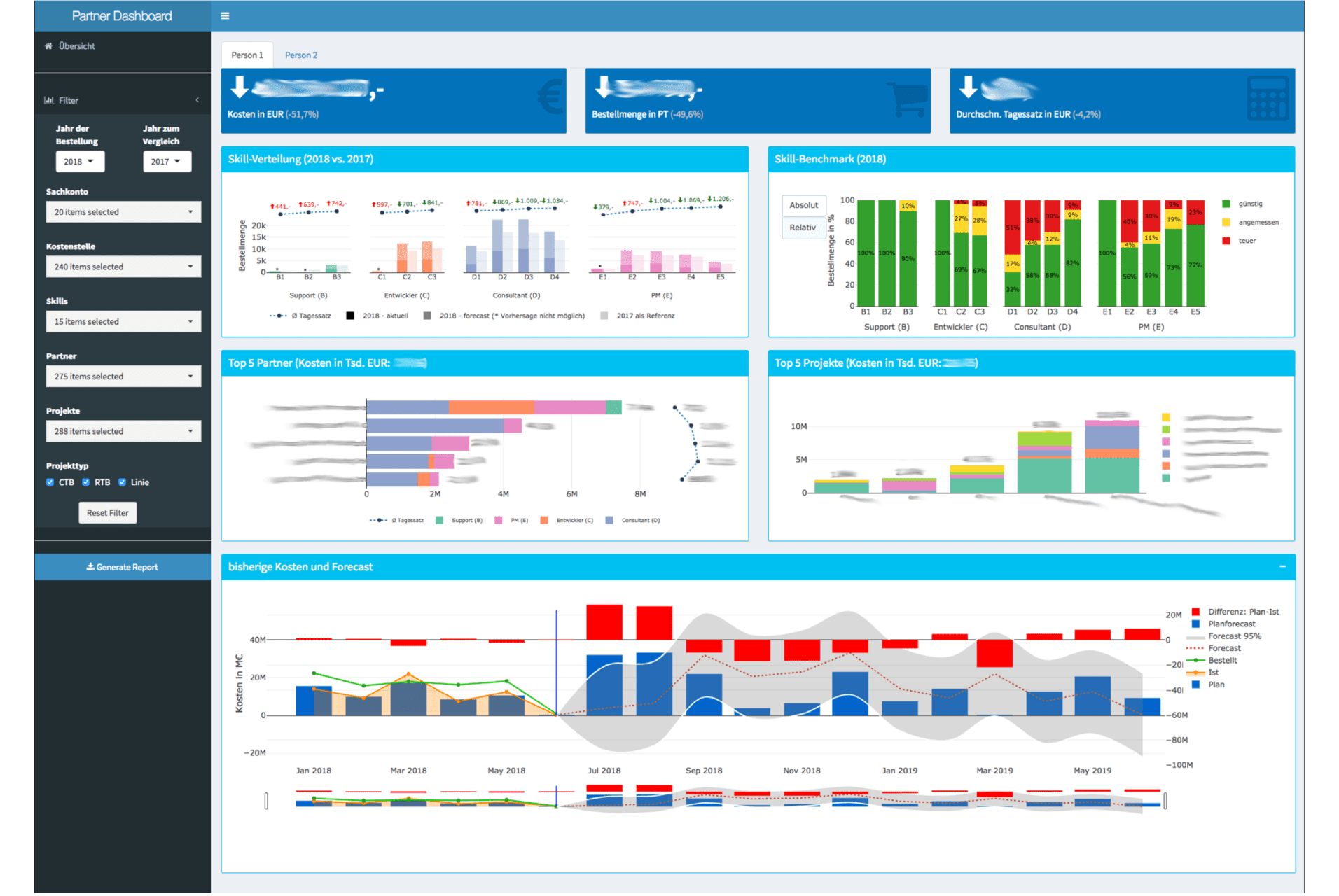Augmented intelligence is human-centered decision-making supported by insights achieved through machine learning algorithms. Extracting contextual insights from data and delivering them at the right time to the right people leads to data-enabled decision-making.
Challenge
Optimizing vendor procurement spending. The goal of the project was to prepare and analyze the data from the SAP module Ariba to help the “Purchasing” department optimize value and cost control with vendors.
Solution
A drill-down dashboard was developed that evaluates the data for external resources by skill level, projects, and partners in real-time enabling analysis of market prices vs. purchase prices. In addition, a spending forecast was calculated based on past years for the remainder of the fiscal year. The dashboard is based on descriptive statistical models in R and d3.js. The forecasting of expenses is based on the, in R implemented, time series analysis model ARIMA. The development of the dashboard was done within 6 weeks, with 1 additional employee based on RStudio and RStudio Connect Server.
Outcome
With the help of the dashboard, the department was able to identify savings of up to 30%. In addition, the dashboard allows the department to analyze spending without programming and advanced analytics skills enabling continuous data-driven spend management.
Endless Possibilities with Data Science
Silo’d, disparate, and closed systems often lead to an incomplete view and unrealized value of data. Without a complete view of data, the benefits from data-enabled decision-making; productivity gains, cost-savings, automation, and revenue-generating activities are stymied.
A data strategy sets the foundation to develop systems of insight. Gathering; extracting, loading, and transforming data into applicable schema ready to be analyzed
